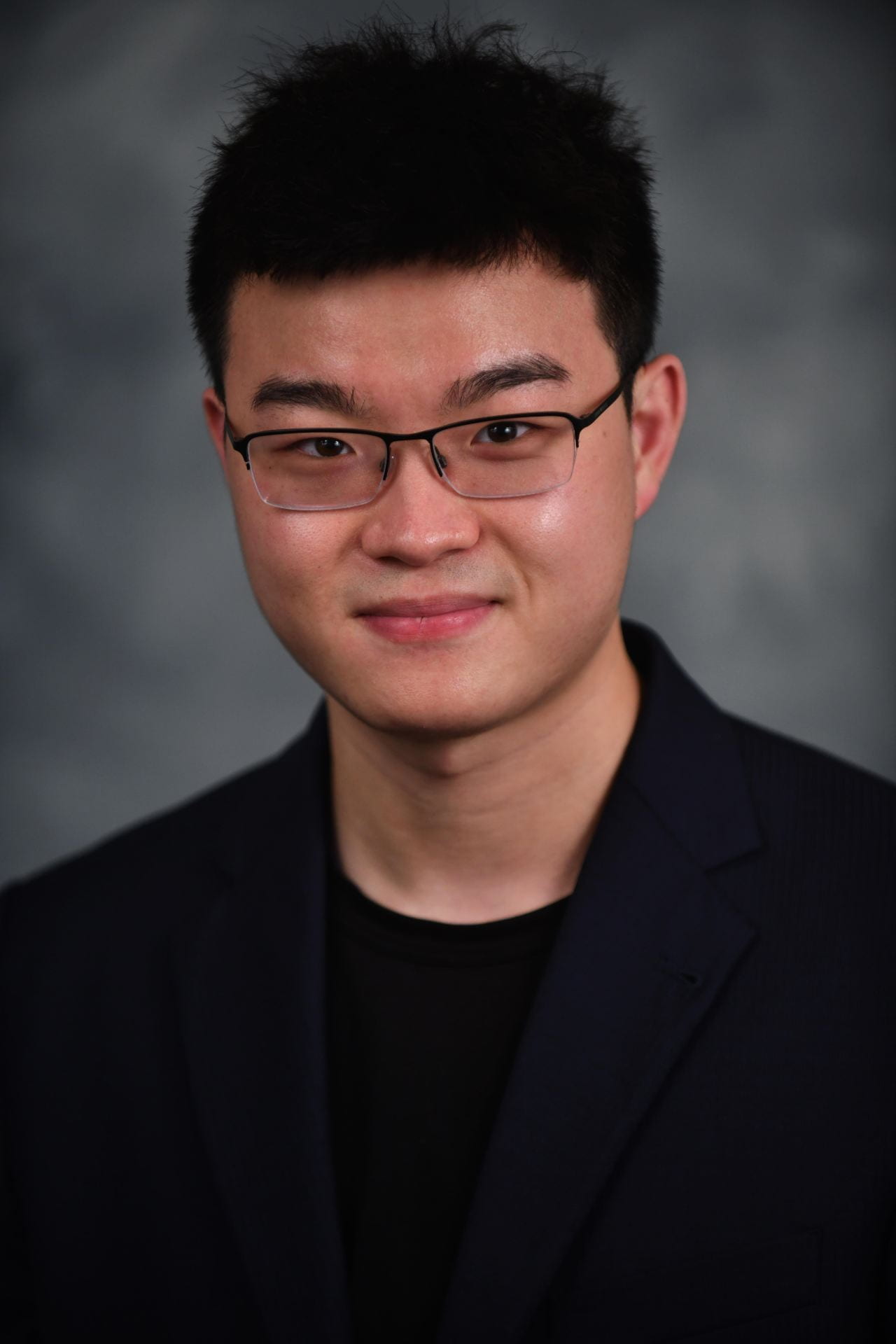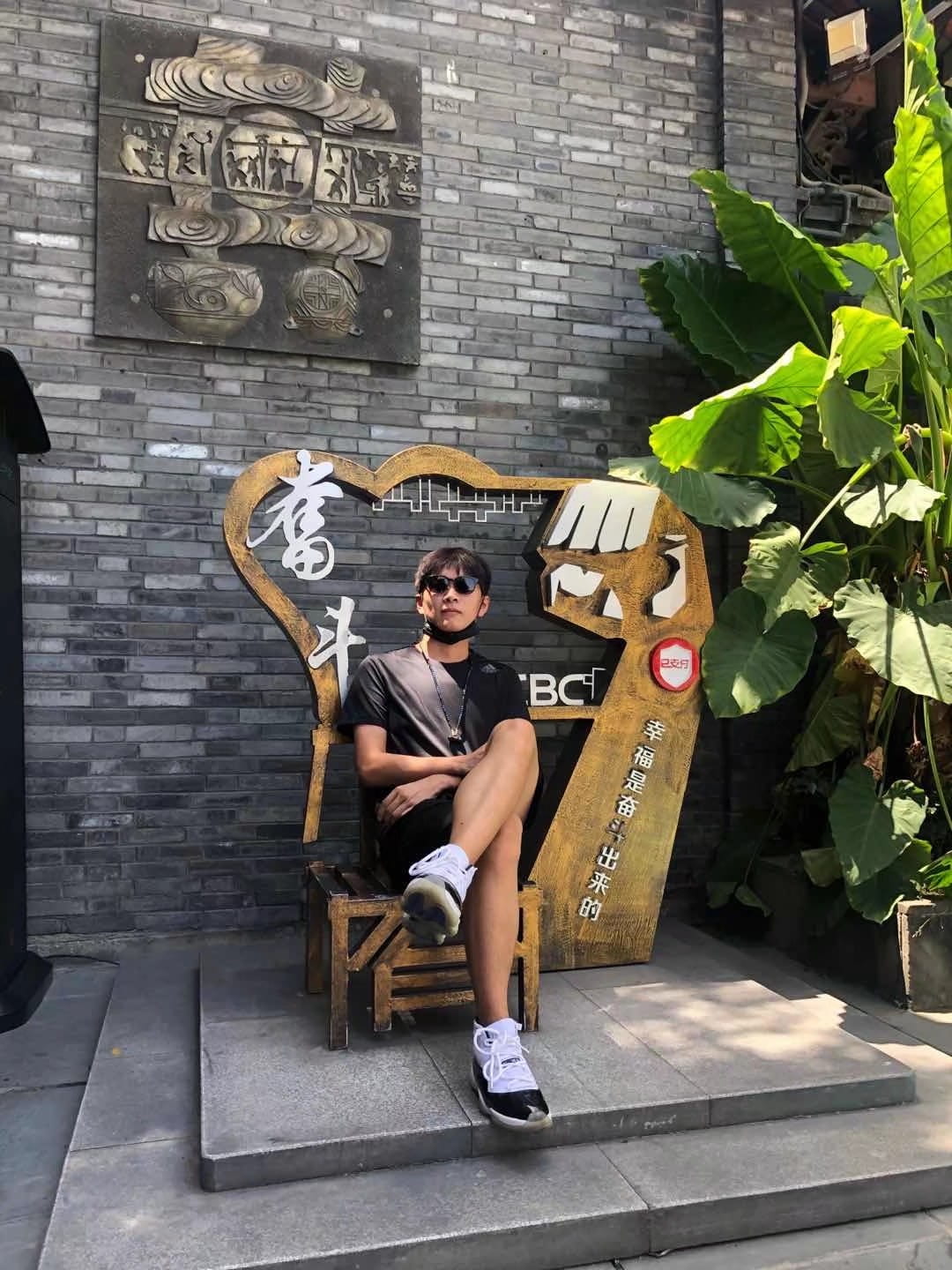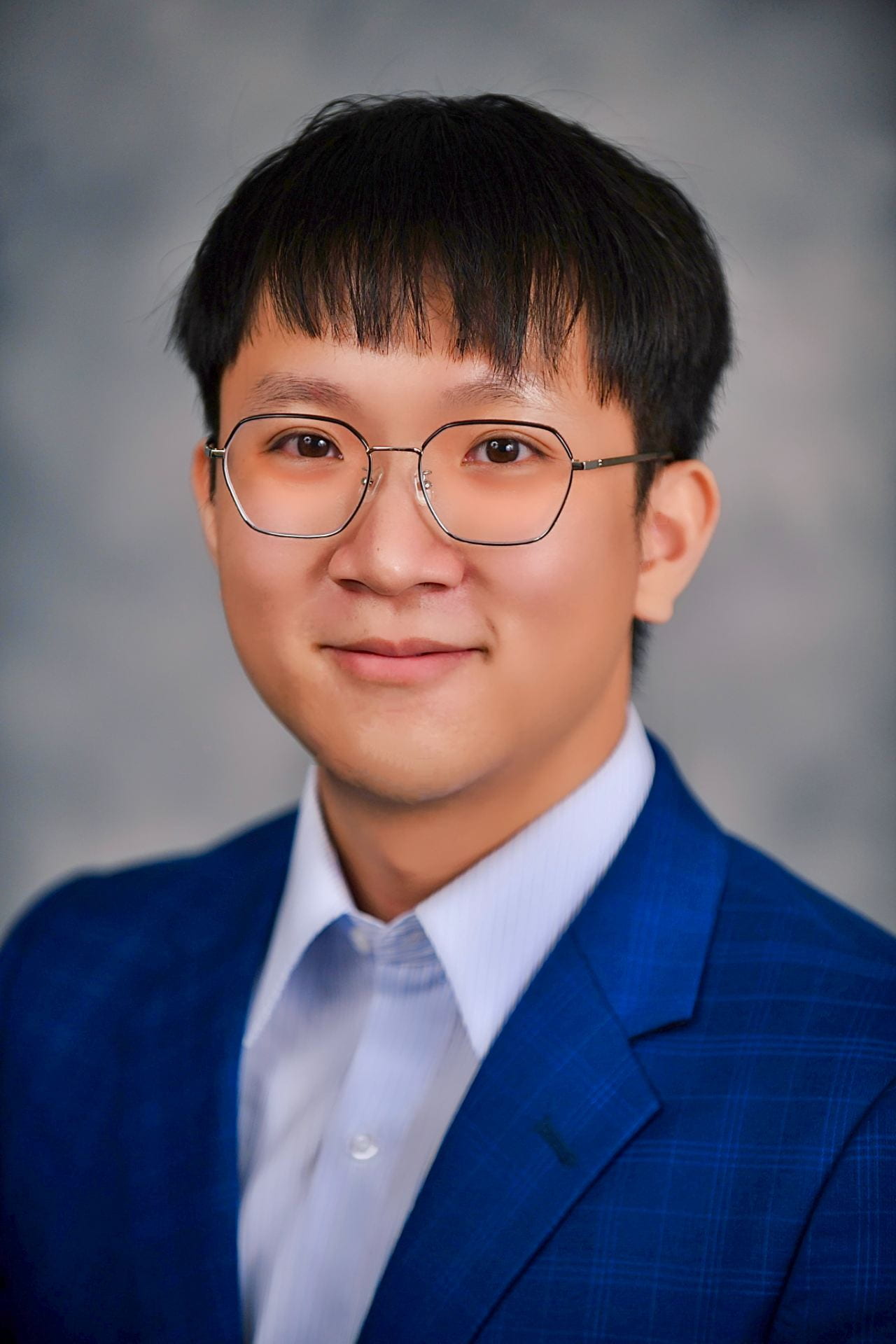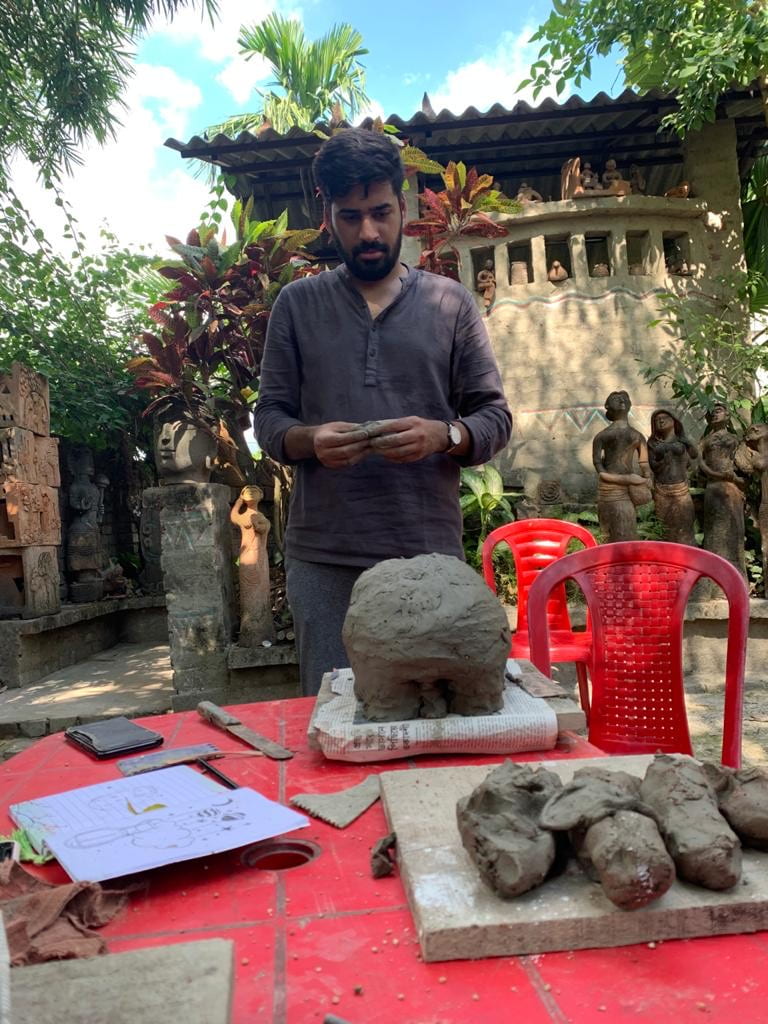PhD Students

Yash Joshi
(Institute of Technology, Nirma University)
ChemE PhD: “Graphite/Graphene/Silicon Hybrids for Li-ion Battery Anodes“
The current state of art Lithium ion batteries are unable to satisfy the demands for EV applications due to their low energy density. One of the main reasons for this low energy density is the use of Graphite as the anode material which has a limited theoretical capacity. Silicon has been the most promising alternative due its extraordinary theoretical capacity. However, Silicon anode undergoes enormous volume expansion resulting in severe capacity decay. Thus, mitigation of this volume expansion has been a stumbling block for its commercialization. My research focusses on engineering void spaces for the effective accommodation of silicon volume expansion. I also carry out in-situ volume expansion measurements via dilatometer to quantify the reduction in volume expansion due to the incorporation of these pores. My research goal is to mitigate volume expansion in the more commercial milled silicon microparticles. Experiments and numerical simulations will be both investigated to arrive at a more fundamental understanding of the fracture mechanics involved in the lithiation and delithiation of the silicon anode.

Jasper Qiu
(East China University of Science and Technology)
ChemE PhD: “Mesoscale Modeling for Directed Self-Assembly Process of Block Copolymers“
My research is about using molecular dynamic method in simulating the self-assembly (DSA) of polystyrene-poly (methyl methacrylate) diblock copolymers (BCP) directed via chemoepitaxial method. The formed structure can be applied in the manufacturing of micro electronic devices, thus BCP DSA can be an economic and promising alternative for EUV lithography. Some issues in this process are required to be solved such as defectiveness, critical dimension variation and line space variation, which all are my research goals.

Meichun An
(National Taiwan University)
ChemE PhD: “Synergy of Graphene Nanoribbons and Graphene Sheets for High-Rate Li-S Batteries“
My research is focusing on the utilization of nanomaterials, like graphene nanoribbons (GNRs), in Li-S batteries. In our previous work, Li-ion batteries with the addition of GNRs, produced by unzipping carbon nanotubes (CNTs), exhibited improved electrochemical performances compared with the batteries with CNTs. Inspired by this achievement, my study deals with the replacement of graphene sheets with GNRs in the cathodes of Li-S batteries. The composition of cathodes has been modified through air-controlled electrospray, to construct a crosslinked network. The two-dimensional structure of GNRs helps build up inter-connected networks, which can increase the electroconductivity, confirmed by the electrochemical impedance spectroscopy (EIS), and modify the porosity, indicated through pore size distribution profiles. My research goal is to alleviate the polysulfide shuttle effect and improve the electrochemical performances of Li-S batteries at high C-rates, with the aid of nanomaterials and porous structures. The synthesis of functional GNRs and simulations of Li diffusion could be the next development of my work.

Cecilia Gao
(Georgia Institute of Technology)
ChemE PhD: “High Rate High Loading Li-S Batteries“
Lithium-sulfur (Li-S) batteries have been recognized as one of the most promising choices beyond lithium-ion batteries (LIB), because of its low cost and high theoretical specific energy (~2510 Wh/kg or ~10 times of LIB). However, it faces a few challenges including low conductivity, severe polysulfide shuttle effect, and low sulfur mass loading, etc. In my past three years, my research aims at designing layer-on-layer sulfur cathodes via air-controlled electrospray that enabled ultra-high sulfur loading up to 6mg S /cm 2 and high areal capacities >5mAh/cm 2 . Another project endeavors to improve the traditional slurry-casting process for high-loading sulfur cathodes by introducing LIB cathode materials, e.g. LiFePO 4 . LiFePO 4 was also found to improve the sulfur utilization and to contribute to a robust cathode-electrolyte interface. In the rest of my PhD life, I am looking into scaling up my high-sulfur-loading Li-S batteries into pouch cells to further meet the industrial standard. Furthermore, I will dig into the complicated sulfur reactions by both experimentally analyzing its gas generation and spatial inhomogeneity, and computationally by DFT ab-initio simulations of polysulfide interactions. I am also interested in switching gears to address the lithium anode issues in Li-S batteries.

Kyle Kersey
(University of Pennsylvania)
ChemE PhD: “Optimization of Tuneable Electrochemical Species and Membrane Architectures for Use in Metal-Free Organic Redox-Flow Batteries“
My work focuses on the synthesis and optimization of new electrochemical species, as well as the development of new cost-effective membrane frameworks, for use in organic quinone-based redox-flow battery (RFB) systems. With the rising demand for energy and the shift toward renewable forms of generation, the issue of reliable, energy-dense forms for storage is becoming increasingly important. RFBs offer a unique response to this demand, yet existing organic-based systems are faced with very low energy densities and high costs per kilowatt-hour. To address these challenges, I will be using organic synthesis techniques to develop a library of quinone-based cathode molecules and to explore new, electrochemically-stable polymeric membranes for incorporation into RFB cells.

Nicholas Schulman
(The City College of New York)
ChemE PhD: “Synthesis and Fabrication of Exfoliated Graphene from Synthetic vs Natural Graphite Using a Taylor-Couette Flow Reactor“
My research focuses on the synthesis and fabrication of few layer graphene (FLG) and expandable graphite (EG) using a Taylor-Couette reactor (TCR). My work is based on the dissertation work of previous graduate student, Mohammed AlAmer, who initially developed the TCR in our laboratory and explored the synthesis of FLG, EG and graphene oxide (GO). The graphenic products from the TCR are used in various applications in our laboratory ranging from Li-ion batteries, Heat Dissipation, EMI Shielding and Graphene Fiber. Currently, my work explores the use of FLG and EG in synthesis of graphene fiber via wet spinning to explore thermal switching behavior of electrical conductivity of the graphene fibers. Additionally, under a partnership with Saudi Aramco, I will be exploring the synthesis of graphenic products from synthetic vs natural graphite sources and comparing their behavior in several applications.

June-Yo Chen
(National Tsing Hua University)
ChemE PhD: “Mesoscale Modeling of Block-copolymer Directed Self Assembly“
My research focuses on the molecular dynamic (MD) simulation. I used the LAMMPS to simulate the reaction between different block-copolymers (BCP) on the semiconductor chips. In Brief, I used the self-assembled PS and PMMA BCP to form the contact hole structure. With different ratios between BCP and various substrates, I can create the specific structures for semiconductor chips. In this way, we are studying a potential field for the lithography process in the semiconductor field.

Vaidik R. Shah
ChemE PhD: “Integration of Gel-Electrolyte component in Li-S batteries”

Yiqi Shao
ChemE PhD: “Conductive Membrane Coatings and Carbon Electrodes Modification for Metal-free Quinone-Based Redox Flow Batteries”
Preston Hollopeter
(University of Rochester)
ChemE PhD: “MOF/Polymer Hybrid Fibers for CO2 Capture and Conversion“
MS Students

Anurag Holani
ChemE MS: “Mesoscale modeling of directed self-assembly of block copolymers for lithography process”

Shreyans Gadiya
ChemE MS: “Polymer/Ceramic Hybrid Separators for High-Rate Lithium Ion Batteries”

Sweety Khatri
ChemE MS: “Coating of Polymer/Ceramic Hybrid Separators for Li-S Batteries”

Ziang Gao
ChemE MS: “Hybridization of Li metal and Graphene for Li Metal Batteries”

Chunyi Zhang
ChemE MS: “Adding functionalized graphene into electrolyte of Li metal batteries”

Yuxin Huo
ChemE MS: “Motionless 3D printing and 3D electrodes”
MEng Students

Chen-Hua Wang
ChemE Meng: “3D electrode design based on silicon/graphene anode and hybrid separator”

Chun-Yu Chou
ChemE Meng: “Development and Design of Novel Polymer/Ceramic Separators Li-ion Batteries”

Hanshen Li
ChemE Meng: “Directly Deposited Si/graphene hybrids for LIB Anode”

Kumar Ityalam
ChemE Meng: “Modification of membrane for Redox flow batteries”

Nidhi Nitin Maniar
ChemE Meng: “Integration of Si/rGO in Li-ion battery anode”

Ritwick Sinha
ChemE Meng: “Chemical functionalization of mechanically exfoliated graphene”

Yuxin Wang
ChemE Meng: “Synthesis, processing and CO2 capture and utilization”